Citroën’s CX was produced from 1974 to 1991. Citroën sold nearly 1.2 million CXs during its 16 years of production. It was voted European Car of the Year in 1975. The name CX is derived from the symbol for drag coefficient, drawing attention to the car’s aerodynamic design, which was uncommon in 1974. The CX was the last Citroën design to be overseen by Robert Opron.
There has been some controversy regarding whether the Citroën CX was influenced by other designs at the time or it was fully evolved in house at Citroën’s Bureau D’Etudes.
At the end of the sixties, a few months prior to the launch of the SM and GS, Opron’s team started work on the successor to the DS; an effort called Projet L.
Prior to that Opron had done redesign studies on the DS. The most notable being a rework of the front end that incorporated 4 headlights housed behind glass covers; what has readily been referred to as the “cats eyes” evolution of the DS.
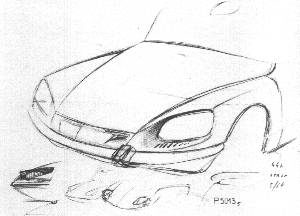
 DS redesign studies by Robert Opron.
DS redesign studies by Robert Opron.
In some of the DS design studies one could see the influence of the CX beginning to take hold, but it was not until the green light was given for a replacement that Opron could sculpt the aerodynamic form of the CX that distinguished it as a true and modern successor to the DS.
Citroën had been long at work from the late 1950s trying to bridge the model range between the 2CV on the low end and the DS as their flagship offering. In fact the model that best shows how Citroën innovated on their own to arrive at the CX is the smaller but similarly shaped GS that the company introduced in 1970.
The GS’s roots can be traced back through 3 generations of projects within Citroën for a medium sized sedan. As early as 1960, a year before the introduction of the AMI 6 (based in 2CV mechanicals including the first fitting of the larger 602cc air-cooled engine) Citroën were toying with Projet C, the C-60, a prototype styled by Flaminio Bertoni (who also designed the Ami).
Projet C was abandoned in favour of Projet F, another quest for a mid-sized vehicle that also had Bertoni at the helm for design.
Unfortunately Bertoni died in 1964 leaving newcomer Robert Opron to complete the project. Work on this project had reached an extremely advanced stage when Renault launched their Model 16 and almost identically styled vehicle. Rumours of industrial espionage abounded but were unproved.
Taking a new shot at getting a distinctive vehicle to market, in 1967 Citroën abandoned Projet F, wrote off millions of Francs and commenced work on Projet G, what would become the GS, reaching production in 1970.
Clearly one could see in the GS direction the company was going even if the CX was not to be introduced for another 4 years.
What clouds the waters for some is that BMC unveiled the Berlina Aerodinamica, a futuristic sedan, much like the shape of the CX (and the GS) at the 1967 Turin Motor Show.
1967 Pininfarina BMC-1800 Berlina-Aerodinamica.
BMC commissioned Pininfarina to do a styling exercise that was never considered for production, though things might have been somewhat different in the lead-up to the Leyland takeover of the following year had they the foresight to do so. The Berlina Aerodinamica was utterly unique for 1967 (at least to the public). It was svelte and slippery as the standard Austin/Morris 1800 was frumpy and unappealing to contemporary motorists. (Its running gear was pure BMC 1800.) Two prototypes were built but rejected by BMC although the tail treatment was subsequently adapted for use on the Rover SD1 when it came into production in 1976.
 BMC-1800 Berlina-Aerodinamica concept.
BMC-1800 Berlina-Aerodinamica concept.
Side note: The Rover SD1 was accredited with Car of the Year 1977, but that award would soon be irrevocably tarnished. Not nearly enough SD1s were initially built to satisfy consumer demand and there were complaints about terrible panel fitting and a general lack of quality control that the German, Swedish, and even French carmakers would not have tolerated. Besieged by quality control problems by the few who actually took delivery of one, it sunk to establish low standards for British Leyland build quality throughout its life until it mercifully killed off in 1986.
Suffice to say that if the Berlina Aerodinamica didn’t radically influence Opron, it certainly caused him to sharpen his pencil and direct his team to sculpt a body form that adhered to the styling benchmarks seen in Berlina Aerodinamica. Other than the hatchback feature of the Berlina Aerodinamica the GS had similar design attributes albeit in a more compact body shape.
Back to Projet L; With the GS nearing completion Opron began concentrating on Projet L and ith the accolades praised upon the design of GS (and its technical innovations) Opron now had the latitude to expanded its shape with less restriction in sizing and more about striving to achieve the aerodynamic shape he had originally envisioned for Citroën’s DS replacement.
Remember that the SM was also developed in this time period, but the SM was designed by Opron to be a distinctive luxury coupe and although some designs were done (at the company’s demand) to show a 4 door model offering of the SM, it was the next generation DS that inspired Opron to approach the design of the CX setting a benchmark for the future direction of the company much the same way the Traction did in the mid-1930s and the DS had done in the mid-1950s.
 SM sculpted model showing final design for production.
SM sculpted model showing final design for production. 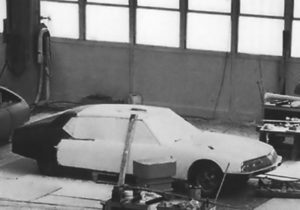 4-door SM development in the Bureau D’Etudes.
4-door SM development in the Bureau D’Etudes.
Given how long we know Citroën took in development of the GS and the CX and that there documented projects within Citroën that we can examine to see their evolution, we think it’s fair to conclude that both models were primarily evolved from a design standpoint by in-house design efforts at the Bureau D’Etudes. (Most certainly they were wholly created from a technical standpoint by the engineers there). Nevertheless, if you look at the course of change and direction in style when Projet G (the design of the GS) got underway, it would certainly appear that Opron was strongly influenced by BMC’s Berlina Aerodinamica. And of course Projet G led to Projet L and the evolution of the CX.
 BMC-1800 Berlina-Aerodinamica concept sketch.
BMC-1800 Berlina-Aerodinamica concept sketch.  CX concept sketch by Robert Opron.
CX concept sketch by Robert Opron.
The CX was the final successful model of the “big Citroën” era, which began in 1934. and is considered by many Citroën enthusiasts as the last “real Citroën” before Peugeot took over control of the company. To that end and despite whatever influence the Berlina Aerodinamica may have had, Robert Opron and the design team at Citroën are accredited for that benchmark accomplishment.

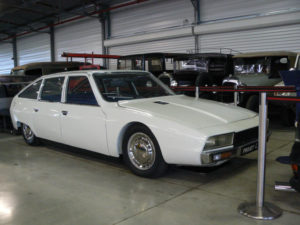


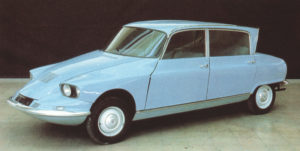
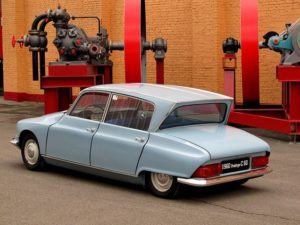
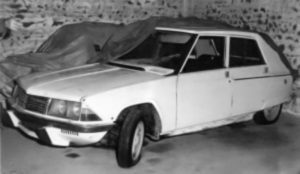



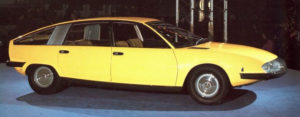
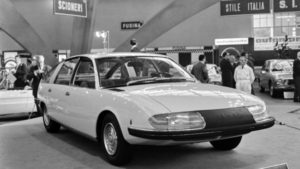
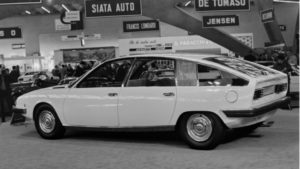


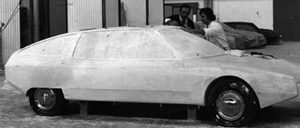

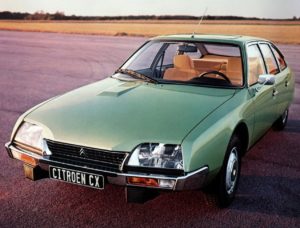

It might be worth mentioning that there were TWO different Pininfarina BMC prototypes. Totally different in size and aimed at different segments. The 1800 based on the BMC Landcrab was indeed the “CX-sized” version, but shortly after Pininfarina also made a much smaller “GS sized” 1100 version which was based on the Austin/Morris 1100. At a glance they look identical, but they are very different size cars. If you do a little googling you can probably easily find them both. The 1100 has a striking resemblance with the GS, and the timing seems just right for Opron getting some inspiration from there.
Gert Bue Larsen